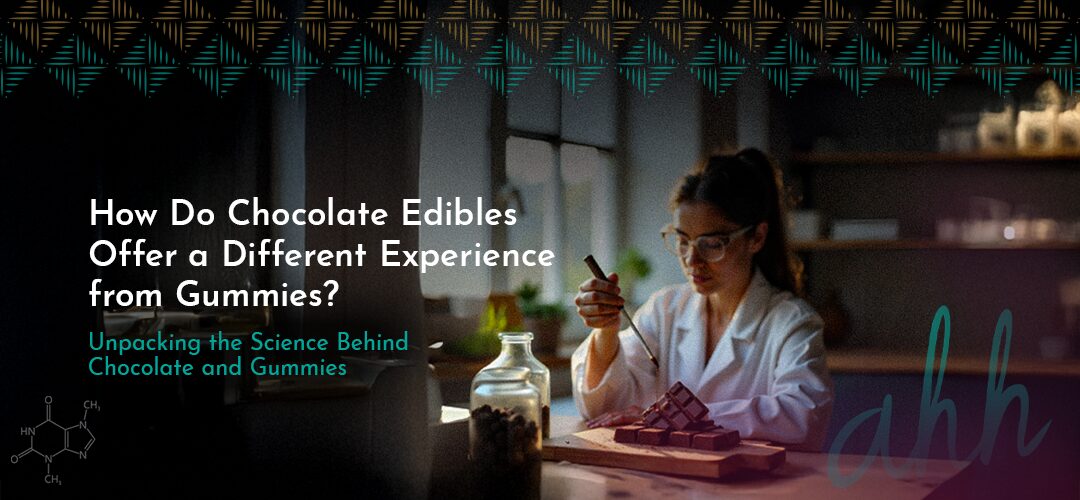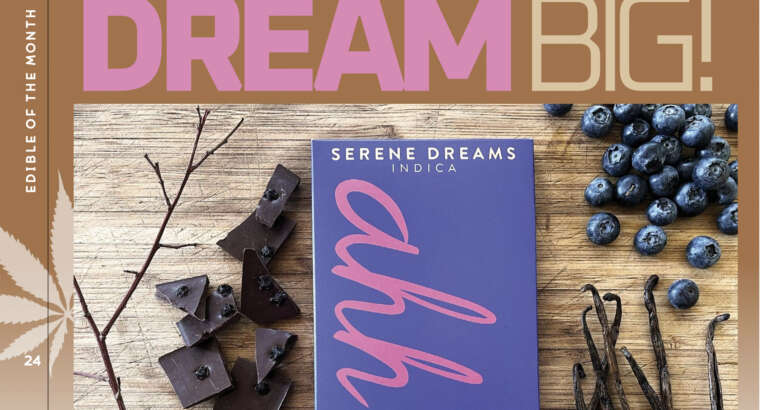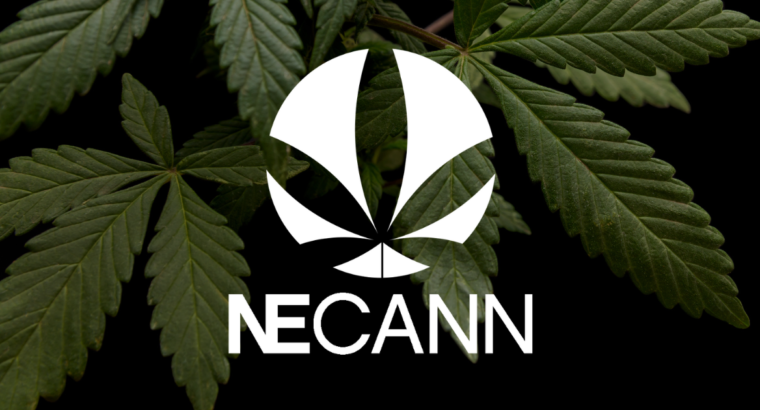Unpacking the Science Behind Chocolate and Gummies
Edibles have become a popular and intriguing part of the cannabis world, offering a way to consume cannabis without the need for smoking or vaping. For the uninitiated, edibles range from gummies to chocolates to baked goods, each promising a unique experience. One question often arises among enthusiasts: Why do chocolate edibles hit differently than gummies?
This isn’t just speculation. There’s science at work here. The subtle yet powerful differences in how chocolate and gummies interact with cannabis compounds make the journey through each edible distinct, impacting how we experience the effects. Let’s dive into the unique qualities of chocolate edibles versus gummies, looking at everything from flavor to THC absorption, and ultimately unravel the science behind why chocolate edibles pack a more potent punch.
Understanding Edibles
What Are Edibles?
Edibles are food products infused with cannabis compounds, typically THC or CBD, that deliver the effects of cannabis in a way that’s digestible and convenient. Unlike smoking or vaping, edibles have a delayed onset time because they’re processed through the digestive system. This delayed release means the effects can be powerful and long-lasting.
Types of Edibles: A Brief Overview
Edibles come in a variety of forms, from baked goods like brownies and cookies to hard candies, gummies, and, of course, chocolates. Each type offers a different flavor, potency, and experience. But when it comes to edibles, the standout products are gummies and chocolates. Both offer potent experiences, but chocolate often takes the lead in terms of intensity.
The Appeal of Chocolate Edibles
Why is Chocolate Preferred?
Chocolate is more than just a tasty treat; it’s an experience. From a silky texture to a satisfying melt-in-the-mouth, chocolate is one of the most beloved flavors worldwide. Its richness pairs well with cannabis, masking any bitter undertones that cannabinoids may impart. This creates an experience that’s enjoyable both for the palate and the mind.
The Psychological Connection: Chocolate as Comfort Food
There’s a psychological aspect to chocolate that’s hard to ignore. Chocolate has long been associated with comfort and indulgence, and when paired with cannabis, it enhances the relaxation experience. It’s no wonder many choose chocolate as their edible of choice for unwinding.
The Cultural Weight of Chocolate
Chocolate also carries cultural significance as a symbol of luxury and celebration. Historically, chocolate has been linked with happiness and relaxation, making it an ideal carrier for cannabis, which often serves similar purposes. This cultural association can make the effects of cannabis in chocolate feel even more pronounced, as the ritual of consuming chocolate can set the tone for relaxation and comfort.
Gummies: The Classic Choice
The Popularity of Gummies
Gummies are a longstanding favorite among edible enthusiasts. They’re easy to consume, available in a variety of flavors, and convenient for portion control. Gummies also appeal to those who want a less indulgent experience than chocolate and prefer something sweet and fruity.
Flavor Profiles and Varieties
From sour to sweet and even spicy, gummies offer diverse flavors that appeal to a wide range of taste buds. This variety is ideal for people who enjoy cannabis edibles but prefer not to indulge in chocolate. Gummies provide a lighthearted, easy-going experience that’s ideal for daytime or on-the-go consumption.
Ease of Consumption: Gummies vs. Chocolate
Gummies are undeniably convenient. They’re portable, non-messy, and offer easy-to-manage dosages. Gummies may not have the luxurious mouthfeel of chocolate, but their straightforward nature and simplicity are exactly what some people look for in an edible.
Comparing Potency: Chocolate vs. Gummies
THC Absorption Rates and Bioavailability
One reason chocolate edibles often hit differently than gummies is due to how THC is absorbed by the body. THC is fat-soluble, meaning it dissolves in fats rather than water. Because chocolate contains more fat than gummies, it can create a more efficient delivery mechanism for THC, resulting in stronger, more potent effects.
The Role of Lipids in Chocolate
The high-fat content in chocolate helps transport THC through the bloodstream more effectively. Fats play a crucial role in the bioavailability of THC, allowing it to be absorbed into the bloodstream more efficiently than in low-fat or non-fat edibles like gummies.
Sugar and Cannabinoid Interaction
Interestingly, sugar can influence the absorption of cannabinoids as well. Both chocolate and gummies contain sugar, but the types and amounts can vary, affecting how THC is processed by the body. However, because chocolate’s fats are more effective at carrying THC, the end result is often a more powerful experience.
Why Do Chocolate Edibles Hit Harder?
The Role of Lipids in THC Absorption
Lipids (fats) are the reason why chocolate edibles hit harder. Since THC is fat-soluble, it pairs exceptionally well with chocolate’s fatty content. When you eat chocolate, the THC binds to these lipids, which your body can process more effectively, delivering stronger effects than with lower-fat edibles.
Metabolism: How Our Bodies Process Different Edibles
When THC-infused chocolate reaches the liver, it undergoes a conversion process that changes THC into a more potent compound known as 11-hydroxy-THC. This compound crosses the blood-brain barrier more easily, resulting in a more intense high compared to other forms of THC. With gummies, this process happens too, but without the fat boost that chocolate provides, the effects may not feel as intense.
Consumer Reports and Anecdotal Evidence
Anecdotally, consumers often report feeling a more immediate and intense high with chocolate edibles compared to gummies. Many cannabis users find that chocolate not only tastes better but also provides a more satisfying, well-rounded experience.
Chocolate Edibles vs. Gummies: A Side-by-Side Comparison
| Feature | Chocolate Edibles | Gummies |
| Potency | Higher due to fat content | Moderate |
| Duration of Effects | Often lasts longer | Typically shorter |
| Onset Time | Slower but hits harder | Faster but hits lighter |
| Texture | Rich and creamy | Chewy and light |
| Ease of Dosage | Requires careful portioning | Easy portioning |
Dosage Considerations
Understanding THC Dosage in Edibles
Whether you’re new to edibles or experienced, dosage is essential. THC potency varies between products, so understanding the correct dosage can help prevent overconsumption.
Recommended Dosage for Beginners
For beginners, a low dose of THC, 5mg or less, is ideal for starting. With chocolate, the potency can be higher than expected due to the fat content, so it’s essential to start slow and see how your body responds.
How to Measure Dosage in Chocolate vs. Gummies
When it comes to measuring THC dosage, gummies tend to make the process straightforward. They’re usually pre-portioned, so you can easily control your intake. For instance, if a gummy contains 5 mg THC, you know it’s within the low-dose range, perfect for beginners or those seeking mild effects.
Chocolate, however, can be a bit trickier. Since it often comes in a large bar, you’ll need to break it into smaller pieces. This requires careful attention to the label to determine the THC content per serving. For example, if a bar contains 100 mg THC, dividing it into ten equal pieces gives you approximately 10 mg per serving, falling within the moderate-dose range.
Here’s a quick guide to understanding THC doses in edibles:
- 1–2.5 mg THC (Microdose): Subtle effects, great for focus or reducing anxiety.
- 3–5 mg THC (Low): Mild effects, suitable for beginners.
- 10–15 mg THC (Moderate): Noticeable effects, better for experienced users.
- 20–30 mg THC (High): Strong effects, typically for seasoned users.
- 50–100 mg THC (Very High): Intense effects, not recommended for most people.
- 100–500 mg THC (Extremely High): Reserved for medical use or those with a very high tolerance.
Whether you’re indulging in gummies or breaking apart a chocolate bar, always start low and go slow to find your ideal dose.
Health Benefits
The Positive Aspects of Edibles
Cannabis edibles offer a convenient and health-conscious way to enjoy cannabis without the potential risks of inhaling smoke. For consumers looking to prioritize their health, edibles like chocolate or gummies provide a smokeless alternative that seamlessly blends enjoyment with wellness.
Nutritional Comparison: Chocolate vs. Gummies
When it comes to nutritional value, chocolate outshines gummies by a wide margin. Cacao powder, a key ingredient in many cannabis-infused chocolates, is loaded with flavonoids, powerful compounds that have been shown to help lower blood pressure, enhance blood flow to the brain and heart, and even reduce the risk of blood clots. The antioxidants in cacao may also positively influence how your body responds to insulin, potentially lowering your chances of developing diabetes.
In addition, chocolate contains essential minerals like magnesium, which supports muscle and nerve function, as well as a sense of relaxation. Gummies, while often lower in calories, tend to be higher in sugars and lack the robust health benefits that cacao-infused chocolate offers.
For those who value both flavor and health, cannabis-infused chocolate provides a luxurious and nutrient-packed choice, making it a clear winner over sugary gummies in the edible world.
The Legal Landscape of Edibles
Legal Status of Cannabis Edibles in Different Regions
The legality of edibles varies by location. In regions where cannabis is legal, edibles are typically available at licensed cannabis stores.
Packaging and Labeling Regulations
Edible cannabis products must follow strict labeling guidelines to ensure consumers understand dosage and potency, helping them consume responsibly.
Consumer Safety Standards
Edible producers are subject to food safety standards, ensuring the product is safe to consume. Ahh Moments prioritizes consumer safety, maintaining high-quality production standards for all its products.
The Final Say
Chocolate and gummy edibles each bring unique experiences to the table. While gummies offer a convenient and straightforward option, chocolate’s fat content provides an enhanced delivery system for THC, often resulting in a more intense and satisfying experience. So, whether you’re a fan of the chewy delight of gummies or the rich comfort of chocolate, experimenting responsibly can help you discover which edible type aligns best with your preferences.
As always, remember to start small and enjoy the journey, savoring the nuances of each edible type. Happy exploring with Ahh Moment’s exceptional range of edibles!
Frequently Asked Questions
Are chocolate edibles more potent than gummies?
Yes, due to the fat content in chocolate, it’s generally more effective at delivering THC to the bloodstream.
How long do chocolate edibles take to kick in?
Typically, it takes 30-90 minutes, depending on metabolism and tolerance levels.
Can I make my own chocolate edibles at home?
Yes, with the right recipe and cannabis infusion technique, it’s possible to make chocolate edibles at home.
What are the best ways to store chocolate edibles?
Store them in a cool, dry place away from sunlight to prevent melting and potency loss.
Are there any specific brands known for stronger chocolate edibles?
Yes, brands like Ahh Moments, with their high-potency, locally sourced cannabis chocolate, are known for their quality.






